Were Any Animals Harmed During Filming Of Holy Mountain?
Jodorowsky Would Cut Off His Arms in Order to Teach Usa the Correct Way to Live
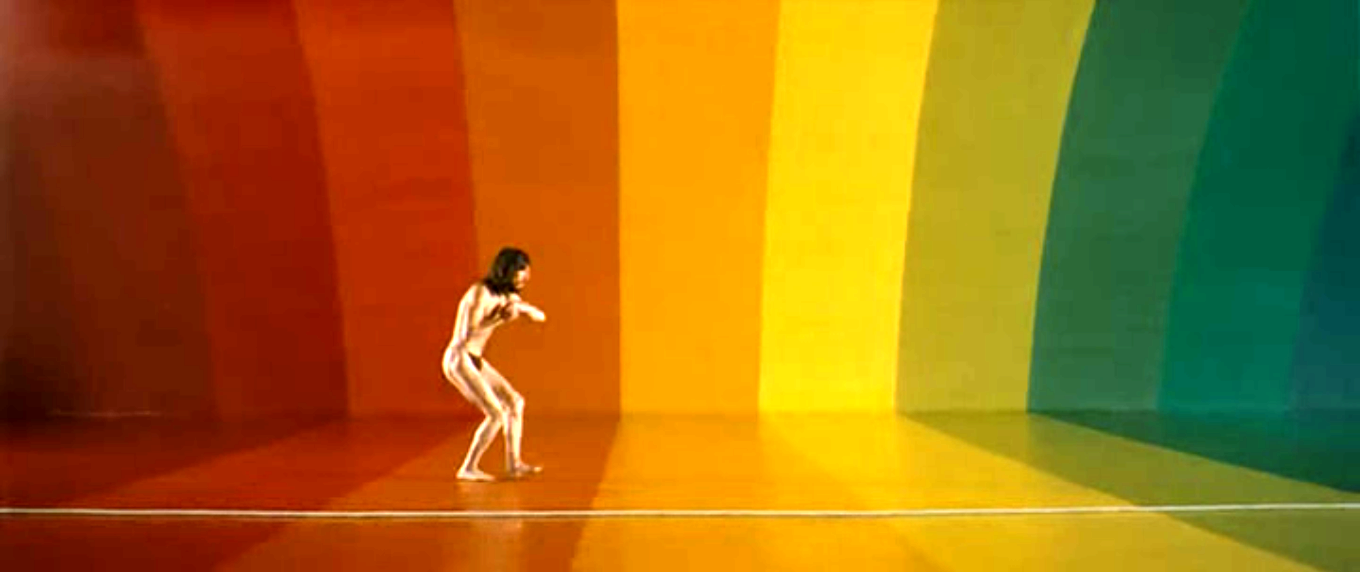
Liam's Film School
"Hey Liam, why don't you pick out five movies on Netflix you think I Need to scout?"
With this fateful request Justin Harlan began a journey into the depths of moving picture pleasure and hurting. Yes, friends can love each other, but they tin also subject each other to true torture. Liam's Flick Schoolhouse is an opportunity for one human to encounter what he can subject his friend to, artistically, and get abroad with it.
"…if I need to cutting [off] my artillery in club to make that picture, I will cutting [off] my arms. I will exercise information technology. I was believing that to brand a picture show that will give a mutation to the young minds was sacred. Yous need to sacrifice yourself."
This line from Jodorowsky's Dune rung very true for me after having watched iv of his most well known films in the prior weeks. Not but did I understand his bespeak, when I watched him proverb this in the documentary about his greatest moving-picture show that never was, merely I have no doubt in my mind that the lunatic genius would do it.
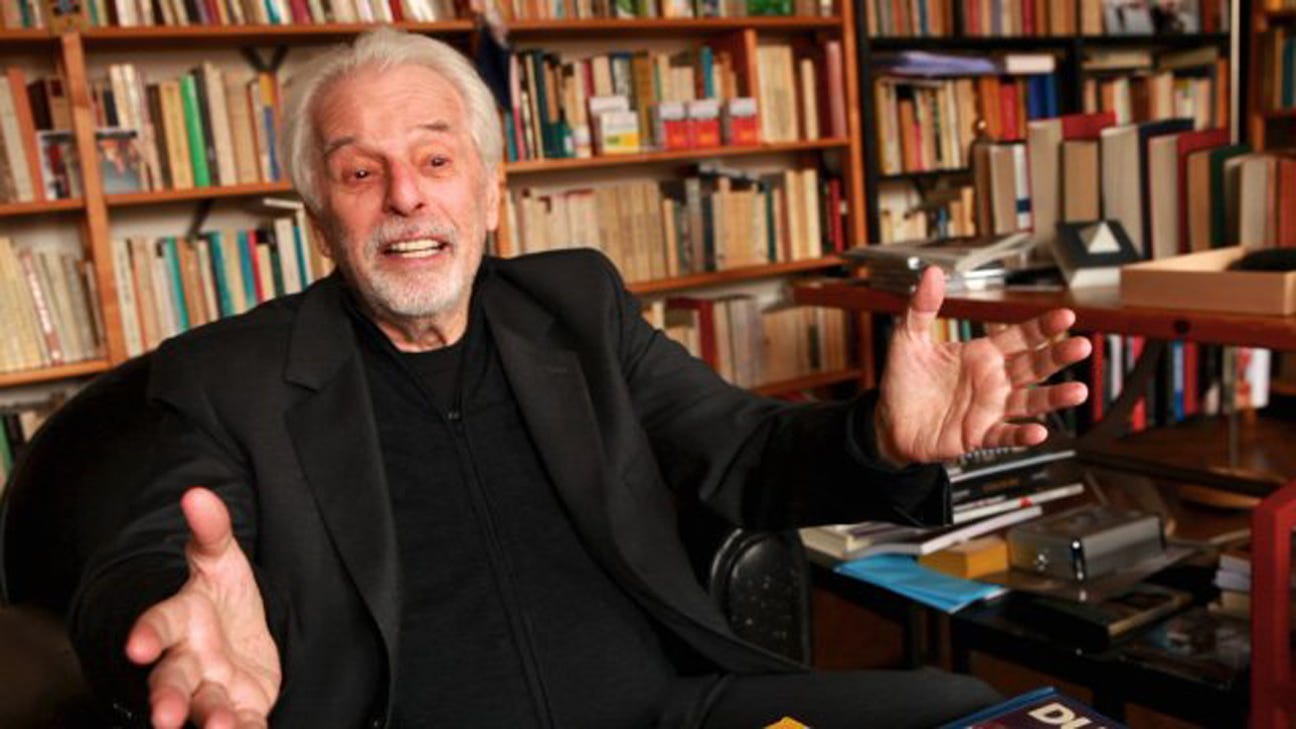
The assignment was different than my previous ii Liam'south Film School assignments in that I suggested it, but I knew Liam would seize with teeth because he's got an analogousness for Jodorowsky and even anecdotally refers to his firm as "The Holy Mount". The initial challenge with this assignment is that Jodorowsky'due south films aren't necessarily linear. As someone who has never been into art-house cinema, I expected this to accept some work on my part and I was correct.
"Y'all are seven years old. You are a man." The cowboy and then leads the young male child to the horse and rides off to a town where the people and animals are all slaughtered in what can only be described equally a cute bloodbath. The lone survivor in this town asks the cowboy, "Impale me, please," to which he easily his gun to the boy and the male child fulfills the plea for the mercy kill.
The first pic in the series was El Topo, a 1970 Western that includes a naked seven year one-time, the aforementioned opening, and a drunkard having sexual practice with a drawing of a naked lady he drew on the footing within just the get-go 10 minutes, was surprisingly more than linear than I expected having previously only seen clips of The Holy Mount.
The nearly unsettling aspect of the picture is the presence of children in some of the more gruesome and/or perverse scenes. At the start of this piece, I referenced a child shooting a dying human while walking through a bloodstained town of massacred people and animals. This male child remains through the first few deadly encounters of the cowboy protagonist. Non only does he remain, merely he remains naked. Why a cowboy would travel with his naked 7 twelvemonth one-time son shooting upwards all types of people is troubling to me.
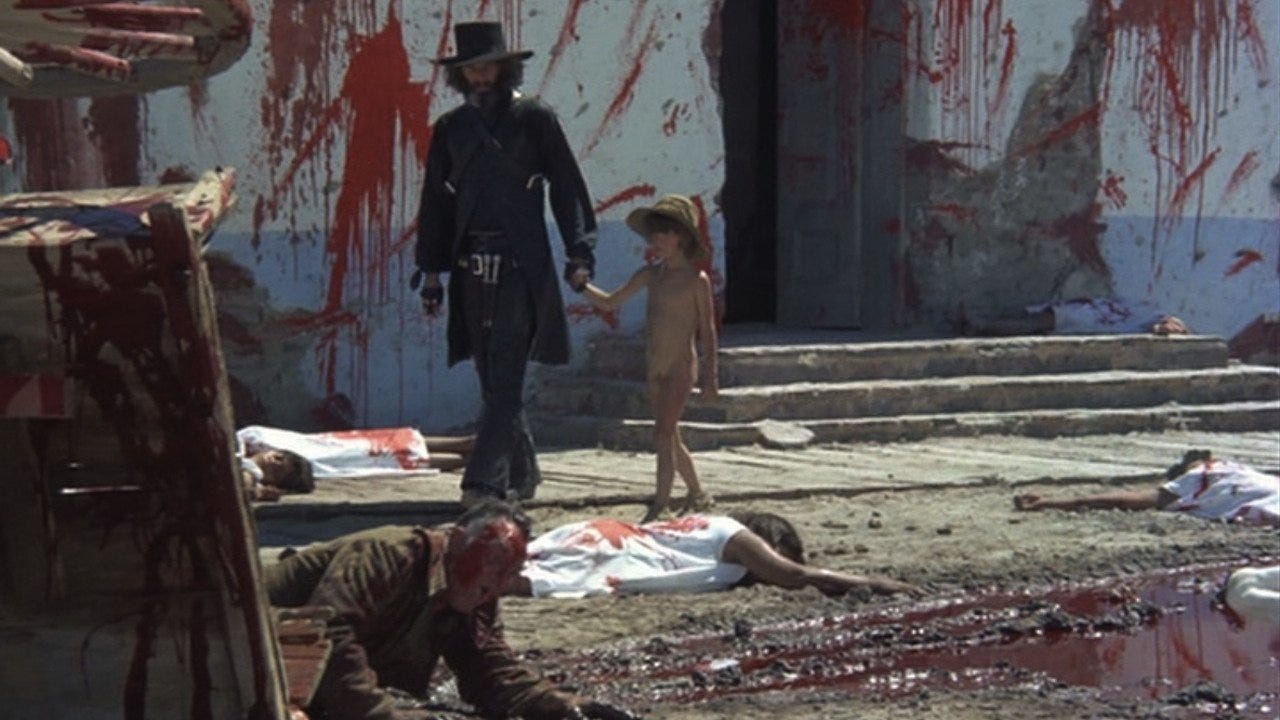
Children continue to appear in some of the worst places of the moving-picture show. In one case, a child is playing equally office of a band performing music at an orgy and in some other, a child is brutally killed. While many images of the picture show were beautiful and haunting and volition stick with me moving forward for some time, the presence of children in means and scenes that felt inappropriate is probably what will stick with me most. Perhaps that is considering I'm a father, peradventure it's just because I'm a decent human beingness.
Juxtaposed to the horrors on the screen is the way in which they are presented; there are tons of beauty in the colors and symbols of this film. A blood filled rabbit bathing hole, for example, is filled with beautiful reds and dejection. The opening bloodbath is breathtakingly gorgeous with the bright reds of the blood that stains an entire city.
The thematic and emotional takeaways of El Topo for me were non necessarily pleasant and not at all well formed, but stiff nonetheless. The selfish search for betterment or enlightenment is ultimately a fool'due south errand, or worse even as it leads the cowboy El Topo to murder, maim, and seemingly die. However, the unproblematic life he leads after reawakening seems much more fulfilling. And, while that simple life somewhen turns once more to his becoming a defender of the outcasts and seeming martyr, it makes me question whether a life full of trying to achieve towards a bigger purpose is ultimately meaningless. However bleak that seems, information technology also allows for one to simply live in the moment. The stark and frequently profane images used in the film seem to exacerbate that indicate in many ways, emphasizing the depravity of El Topo's spiritual quest and the cult-similar society that he later encounters when living a simpler life.
Making it through El Topo, I couldn't help but wonder if I was really ready for The Holy Mountain. Ready or not, I told Liam that the fourth dimension had arrived. He reminded me not to approach the motion-picture show in any style where I tried to assimilate it as plot or brand sense of it. Again, this is reverse to how I typically experience film, only with gentile self-reminders from time to time, I knew I could practise it…
The Holy Mount took me two sittings to fully take in. Afterward I began taking notes as I went in, I realized I was falling into the trap of highlighting plot points rather than emotional responses or sensory reactions. Thus, I close my notebook and just soaked it in until roughly the halfway point of the runtime, where I recorded some of my thoughts and feelings, then returned to the flick the following day and tried to do the same with the back end.
In many ways, I felt like The Holy Mountain was a surreal horror film, with grotesque and violent images that pushed the envelope even farther than El Topo. Certain images are familiar from having watched El Topo… cult-similar societies filled with depravity, the unsettling use of children in scenes of violence and the stark nakedness of young children, street performers performing oddball shows involving trigger-happy imagery, religious symbolism, removal of hair as purification, executions… but The Holy Mount uses these images in fifty-fifty stranger juxtapositions of sacred and profane, beautiful and violent, depravity and glee.
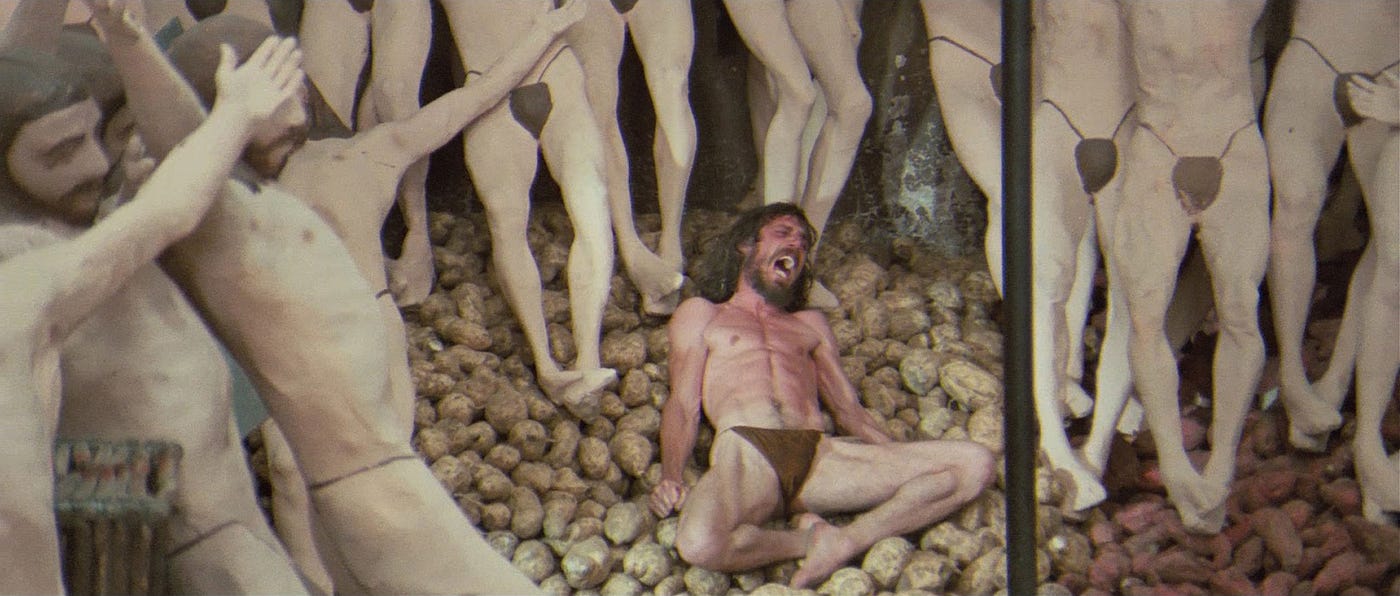
One specific scene is still tormenting me weeks later on watching the moving picture. The thief (our protagonist) goes to sleep to reawaken in a sea of Christ-similar replica statues of himself. His reaction is a cacophony of repeated shrill screams… and, while this is a very fair and appropriate response to existence in the horrific nightmare similar scene he was immersed in, his scream stuck with me throughout the remainder of the film and even at present equally I write. His visceral response created a swelling inside me to bring together him in the screams and, further, join him in his next response of slap-up as many of the statues as he could before running out of steam. The entire scene, or most of it at least, was scored with an irritating buzzing sound that got quieter and louder throughout the scene.
Another i of the disjointed scenes that has stuck with me was far less shocking, at least in an obvious way. In the middle of the film, there is something resembling an pedagogy motion-picture show nearly reanimating dead bodies with electronic engineering science to allow the bodies to give i last kiss goodbye, participate in their concluding rites, etc. While not as unsettling as some of the stark images in the moving picture in appearance, the concept of the scene was unsettling, mainly in it's cosmos of illusion of life. The "illusion of life" thought is connected to my overall feeling regarding the flick, particularly in regards to the flick'southward final scene. Moreover, the "illusion of life" feels similar an important concept in the body of Jodorowsky's piece of work.
Every bit the second half of the film sets its course, the narrative feels slightly more linear, albeit not in whatsoever traditional sense. In essence, from this betoken forward the alchemist and his group of followers, including the thief, actually motility forth with their spiritual journey to "conquer the Holy Mountain" by learning from the traditions and lessons of many traditions and many wisemen. Through this journey, there are some bizarre moments that accept an effect of rendering me confused, but more oft at that place are images and scenarios that standing to create discomfort. As I noticed previously in El Topo, Jodorowsky has no trouble showing animal cruelty and brutality on film. In the latter office of this movie nosotros are subjected to a fell dog fight, people slicing meat straight from a live horse and eating it, and (while not brutal per se) graphic cow sex (not to mention an exploding frog street theater scene in the early part of the pic). These brutal scenes of dead or dying animals are oft coupled with horrific situations involving human characters, such as a sudden castration (something that also happens in El Topo).
And so we approach the finale… a purposeful anti-climax. The travelers (well those who are remaining) notice their destination at the elevation of The Holy Mountain only to have the alchemist pause the quaternary wall and tell the unabridged cast, crew, and viewership that it is all fake and that we need to all return to existent life. And, while Liam told me non to try to make sense of it all, I experience compelled to say that it seems similar the filmmaker is trying to say something similar to what he seemingly said in El Topo: permit go of all the searches and journeys and whatnot and just live.
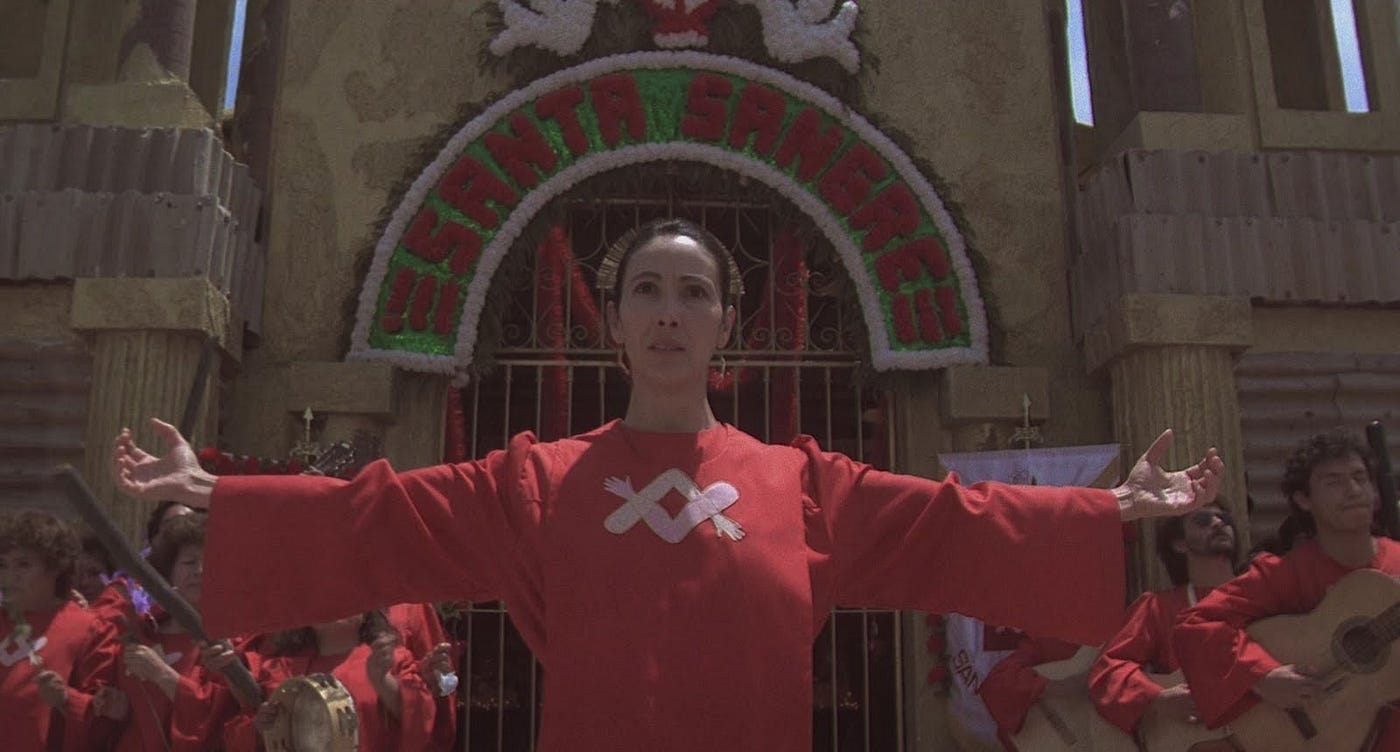
Santa Sangre opens with a naked man in a treelike fixture in what appears to be a room in a sanatorium. This would seem off if I hadn't just watched El Topo and The Holy Mountain. Like these films, Santa Sangre has no fear of pushing the envelope. Information technology continues to apply nightmarish dreamscapes to paint some of the important ideas and pictures. However, unlike the first two films, its general emotional entreatment is created through a bonding to the characters, notably the protagonist and the object of his affection. The viewer feels what they feel and empathizes with their plights.
It's not and so easy equally to summarize anything in a Jodorowsky flick and then simply, all the same. There are more layers than the typical "horror" film. There is the ever present critique of faith and faith, once once again. Looking at all of theses layers, peradventure what Santa Sangre does best is remind the viewer that life is far more nuanced and confusing than nosotros'd probably like it to be.
The flick is unsettling in this way. Information technology is unsettling considering of the mother-son human relationship, because of the reality of how the mind tin become disconnected by horrible trauma, because of some of the violent imagery… but unlike the theater of cruelty in El Topo and The Holy Mountain, it never feels unsettling just in order to be unsettling. It always seems like it is being unsettling considering as surreal and dreamlike every bit the pic can be, information technology is as well very real in it's implications. And it certainly doesn't glorify the deaths and murders, rather seeming to have a moral remainder behind information technology.
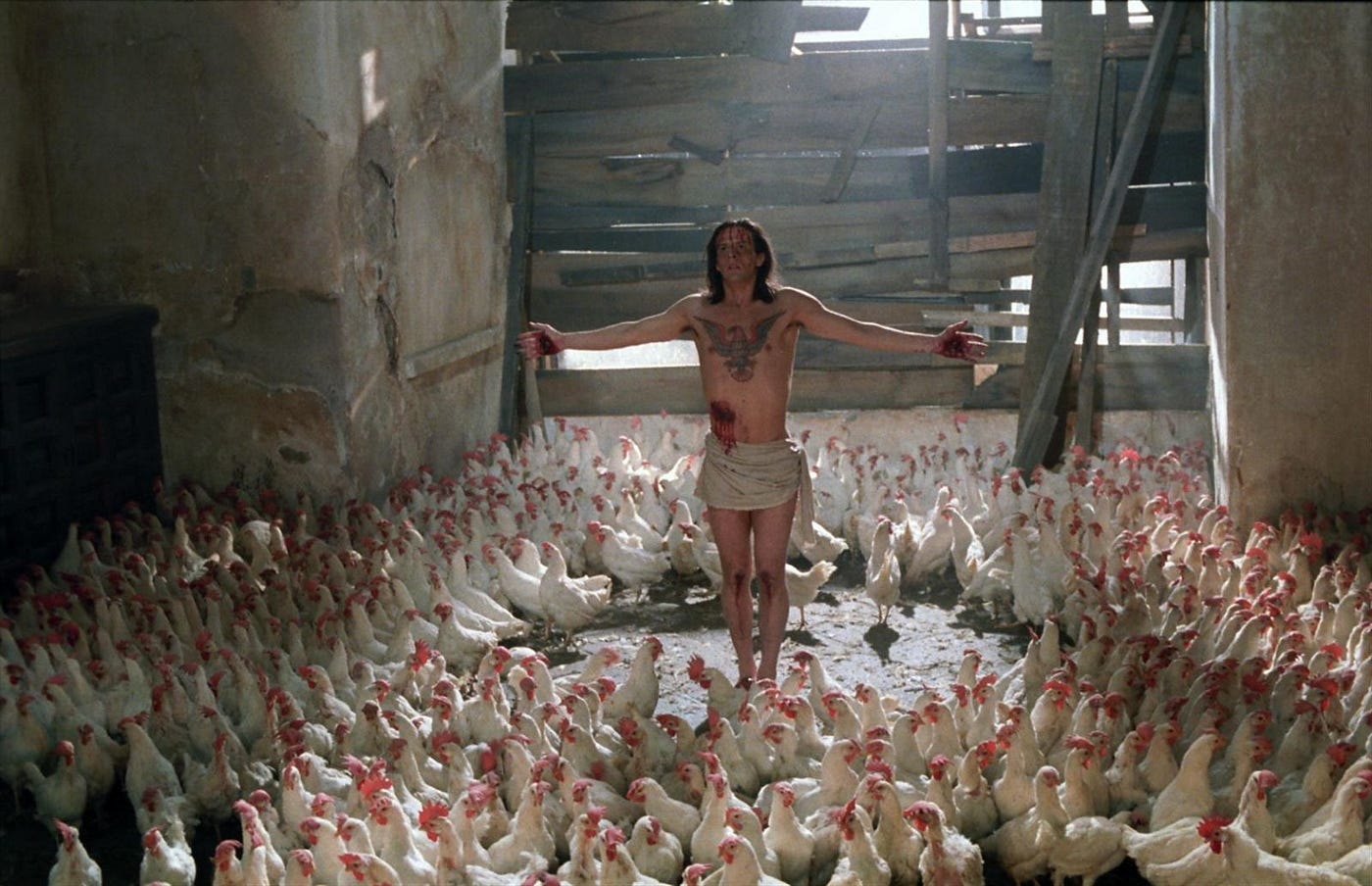
It shows a bit of multifariousness from ii prior films that are so closely tied thematically and in tone. Still, it still feels similar part of the same filmography in many ways. The moral base noted above is something very much present in all of these films, admitting that doesn't mean you lot'd ever try to bear witness whatsoever Jodorowsky film as a morality tale for youth group kids at church or the YMCA after school programme. Nevertheless, this, like the previous films, is a morality tale of vehement images and visceral art. The man tries to control the bloodlusts of his female parent but instead the female parent controls him. Ultimately, he seeks a way out and he seeks forgiveness. The temples being destroyed in this film, like the religious implications of El Topo and The Holy Mountain, seem to point towards a humanistic morality, not based on a organized religion tradition only instead an innate sense of right and wrong within oneself.
If anything is articulate, and I'm not sure anything is, after Santa Sangre, Jodorowsky embraces the darkness within the souls of humanity, the mystic qualities of the lifeforces that be within us and exterior of us, and the reality of unreality. In other words, these films point towards the importance of all of us always being willing to claiming the things inside united states that demand to change and the structures outside of us that try to alter the states. The is great ability in this world, but perhaps greater power within our ain minds, bodies, and souls… and then aye, what I meant was that nothing is really all that clear at all.
By the time I watched the fourth moving picture, in that location were no longer whatever surprises. I'd come to expect a veritable mindfuck. Jodorowsky treats us to another cast of oddball characters, some grotesque scenes, and many surreal moments in The Dance of Reality; all the same, the film presents a story relatively understandable and linear. This story, especially when coupled with my last film of the assignment Jodorowsky's Dune, helped me become into the heed of the artist, now as an older human and matured creative person.
The picture features some of the about realized and beautiful images I'd seen in a movie, non merely in a Jodorowsky movie simply in any motion-picture show. These images are vivid, robust, and gorgeous, sometimes in a Baz Luhrmann mode and sometimes in a way indescribable by me. And, while it didn't disturb in the ways the flick of younger Jodorowsky did, it presented the same morality play ideology as the earlier films.
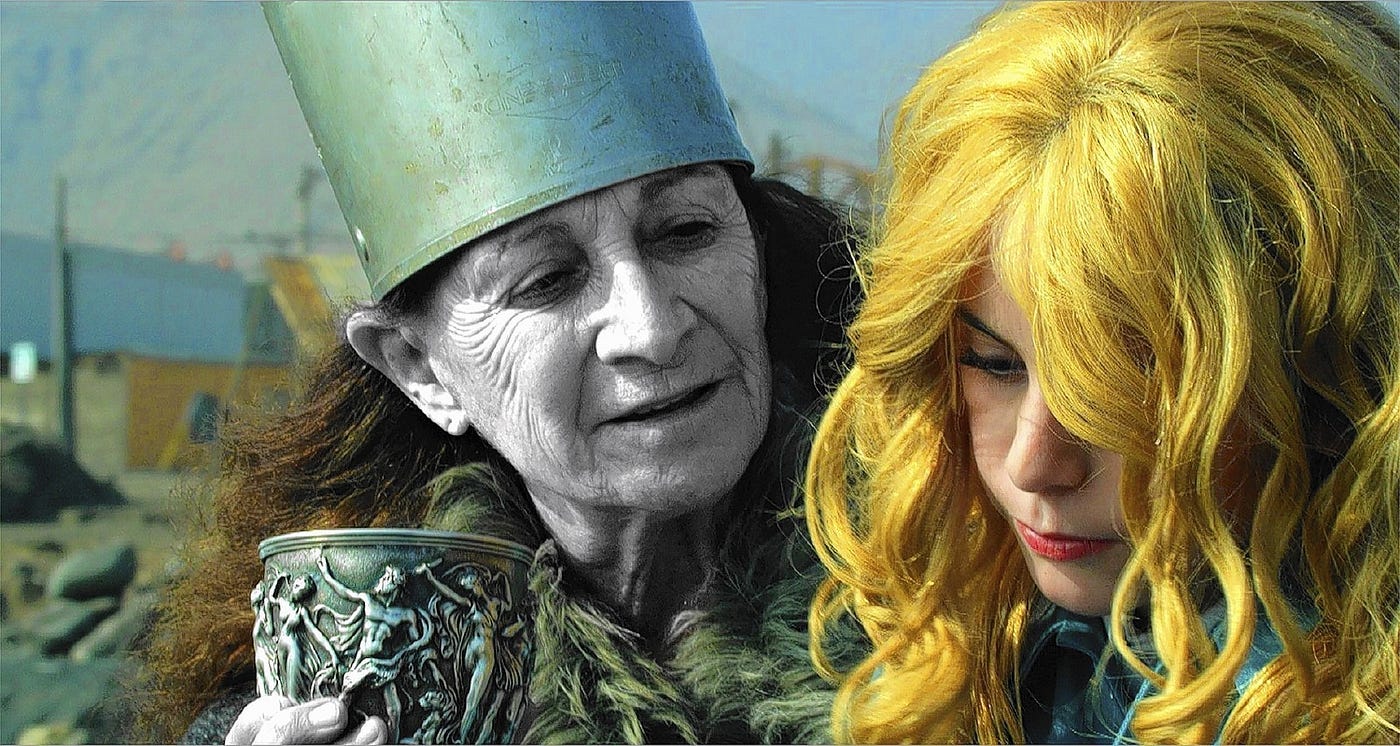
The subject field matter is entirely familiar, at this indicate… family relationships, a desire for simplicity, consequences of poor choices, internal conflict, challenges to conventional wisdom… merely in this film, Jodorowsky is more than vulnerable that ever before. He narrates the story based on his own life that uses surreal and fantastical characters only notwithstanding finds a way to feel raw and existent. While these themes previously were conveyed through the detached theater of cruelty, Trip the light fantastic tells the most straight forward story of the agglomeration.
While the two halves of Trip the light fantastic toe experience a bit disjointed, the picture show brings a focus that seems to be a capstone to the monument congenital by the earlier films. What sticks with me from Trip the light fantastic is how the mature Jodorowsky explains a practiced deal of where his offbeat visceral fine art came from. The horrible begetter presented in Santa Sangre is actualized in the real father of Alejandro in Dance, for example. After seeing depictions of his father, also as his highly sexualized mother, it'south nigh incommunicable to meet where some of the images and themes of the before works come from. While I won't pretend to ever know what's going on in this mad scientist of movie theater's head, this motion picture at to the lowest degree starts to present some framework for looking at the torso of work.
An aversion to reliance on religion or politics, an understanding that at that place are very existent consequences to doing bad things, an acknowledgement of the good and bad inside the states all, a belief that complexity isn't always all it's cracked up to be… the Jodorowsky that this movie and, ultimately this assignment, had painted was one that presented human being every bit human, both triumphant and fucked upward. To call Jodorowsky, based on his work, a humanist is off-white. He champions that people are, at their cadre, able to create magical things, horrible things, and beautiful things.
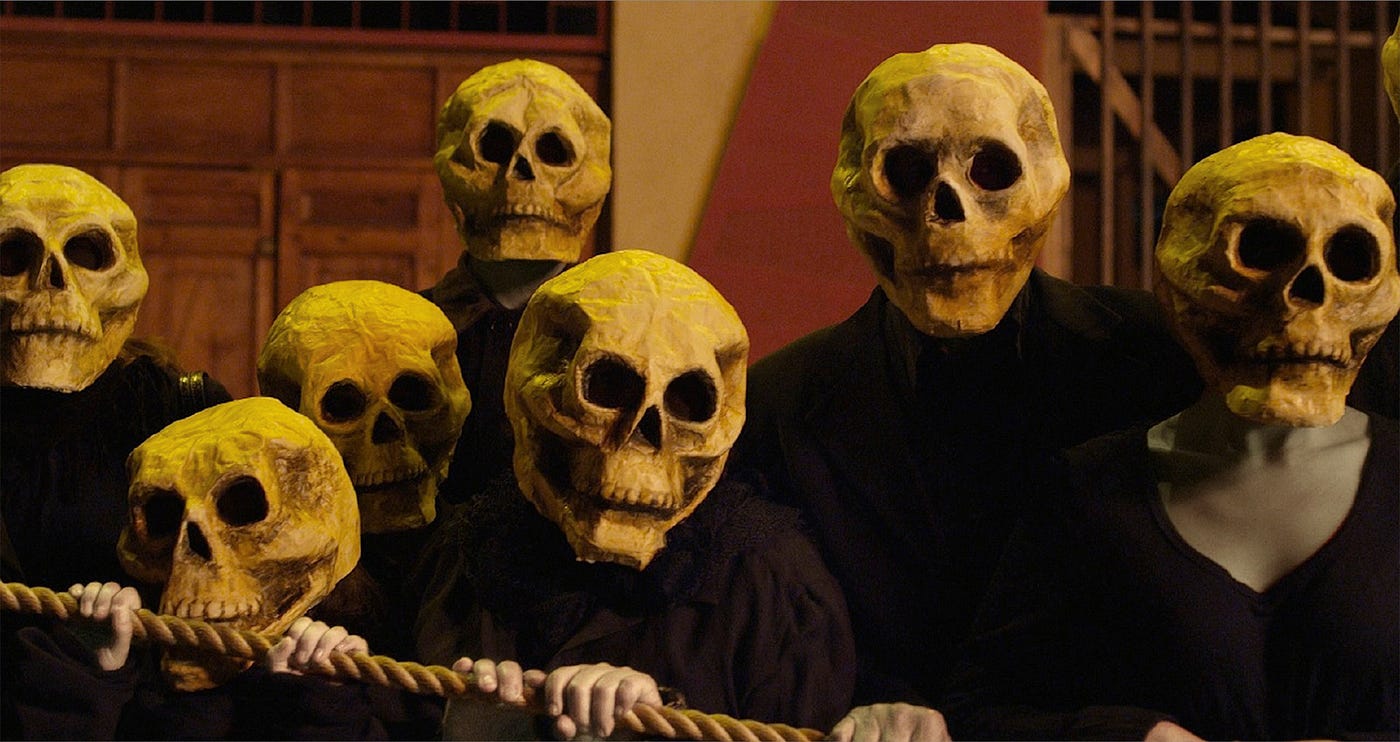
With some concluding understanding of what the man envisioned to do with his films from his own mouth in Jodorowsky'south Dune, I hoped I could finally move on from this assignment with some tangible takeaway. Listening to the homo hash out his unrealized dream project is fascinating and heartbreaking. It'due south more often than not heartbreaking because the project feels captivating and is one that I wish I could have experienced; but, Jodorowsky himself seems to be over the heartbreak mostly. He speaks candidly near a project that he poured himself into, has moved on from, and is content with at this point in his life.
Every bit Liam notes in his review of the film, you get whisked away into the world of Jodorowsky's Dune project, leaving you with a feeling that fine art and the creative process tin be very fragile. But, moreover, I think that when placed in the light of my assignment, these principal works of Jodorowsky, this fragility may speak to life itself. Life is large, grandiose, beautiful, barbarous, destructive, and ultimately fragile. The art that Jodorowsky highlighted how complex life could exist and ofttimes pointed towards simplicity equally a goal. Nosotros search for pregnant, when the answer is piece of cake, just let go of the search and relish the ride.
That's the takeaway… it is that through his theater of cruelty, surrealism, and pain… through his vision of life, dear, and vulnerability… Jodorowsky has reminded me that I should be living in the moment, loving my family, and not letting the search for something bigger and amend lead me astray.
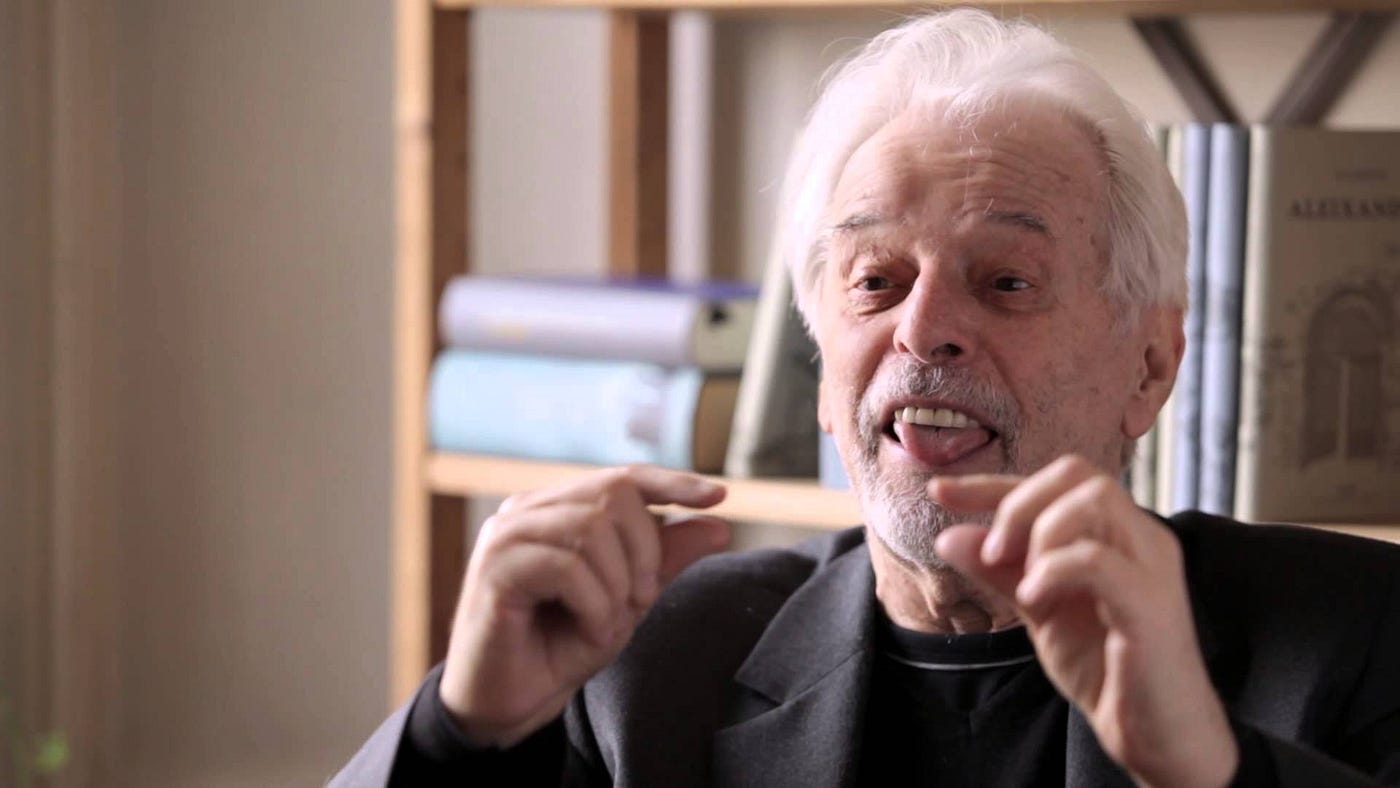
Source: https://cinapse.co/jodorowsky-would-cut-off-his-arms-in-order-to-teach-us-the-right-way-to-live-7f3c3434aac5
Posted by: deschampshignigho.blogspot.com

0 Response to "Were Any Animals Harmed During Filming Of Holy Mountain?"
Post a Comment